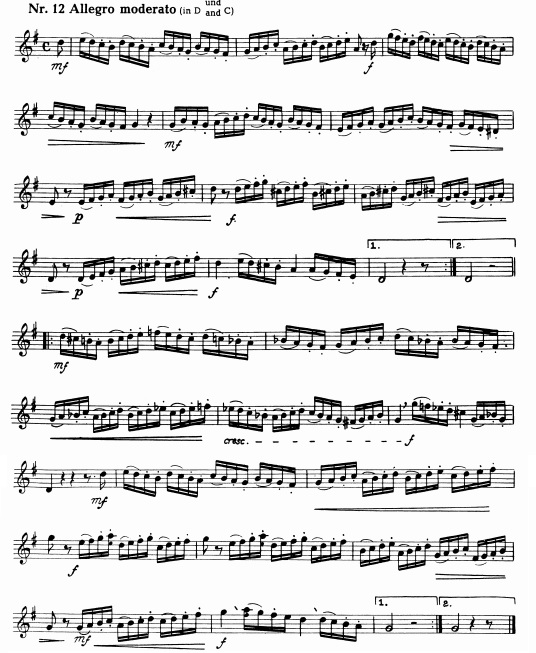Music
Like I’ve mentioned in my other Kopprasch walkthroughs, you can either find a copy of Kopprasch 60 low horn studies from IMSLP or you can buy a hard copy. The price of the IMSLP.org version is great, of course, but if you’re a serious player you should eventually purchase these etudes – the clearer editing and typeset are just a couple of the reasons to buy the “real” version! Here is a copy of the IMSLP version:
Key Points
- If you’ve ever studied Kopprasch #10 (or even just listened to it), you’ll undoubtedly recognize the articulation pattern. The clarity of this is a big challenge in this etude.
- Unlike #10, this etude is moving almost entirely by steps within each 4 note group – the larger skips happen between the groups of 16th notes.
- This is one of the first Kopprasch etudes in a key other than C (concert F). Don’t forget to check your key signature!
- The dynamics consist of a little more “shading” than typical Kopprasch – notice the several mf indications.
Technical Tips
- Articulation: I’ve written about articulation in general and the slur-two-tongue-two articulation pattern before. Make sure you familiarize yourself with how this articulation feels at a slower speed before you start speeding up the tempo. Remember, 16th notes are only as fast as the overall tempo, so setting your metronome to something slow like 60, 50, or even 40 bpm is a fine place to start.
- Scales: I mentioned earlier about the key signature – although this piece is much more harmonically adventurous than other Kopprasch etudes since it starts in G instead of C you’ll be playing in some (potentially) less-familiar keys. Make sure you know both your D major and minor scales, paying special attention to finger coordination around the C# – you have to do the dreaded 23 – 12 fingering several times, so make sure it’s clear.
- Metronome: Remember how I mentioned setting your metronome slow to start? Make sure you are using one to keep the tempo steady and the notes even.
- Repeats: Like a lot of Kopprasch etudes, there are repeats indicated – don’t feel an obligation to take them unless you need to specifically practice endurance.
- Dynamics: Most Kopprasch etudes have an “off-on” dynamic range – either piano or forte and not much in between (except for a crescendo
or diminuendo), but here you’ll also see a mezzo forte – try and give it it’s own dynamic identity.


